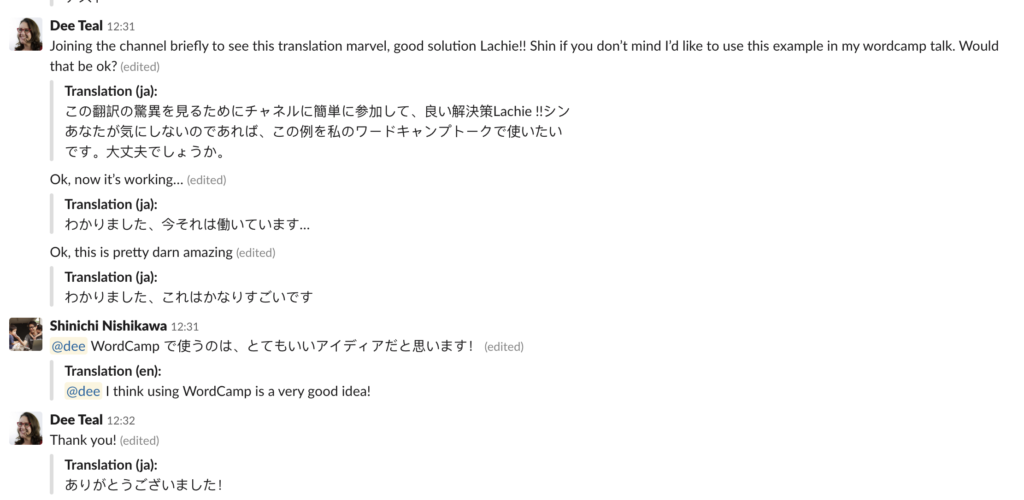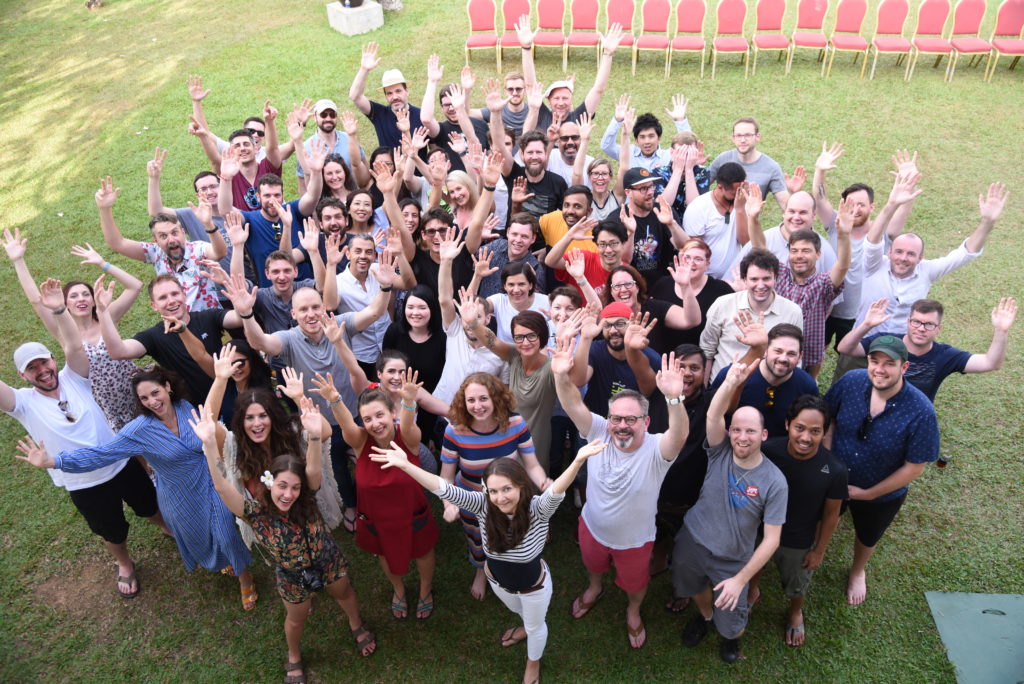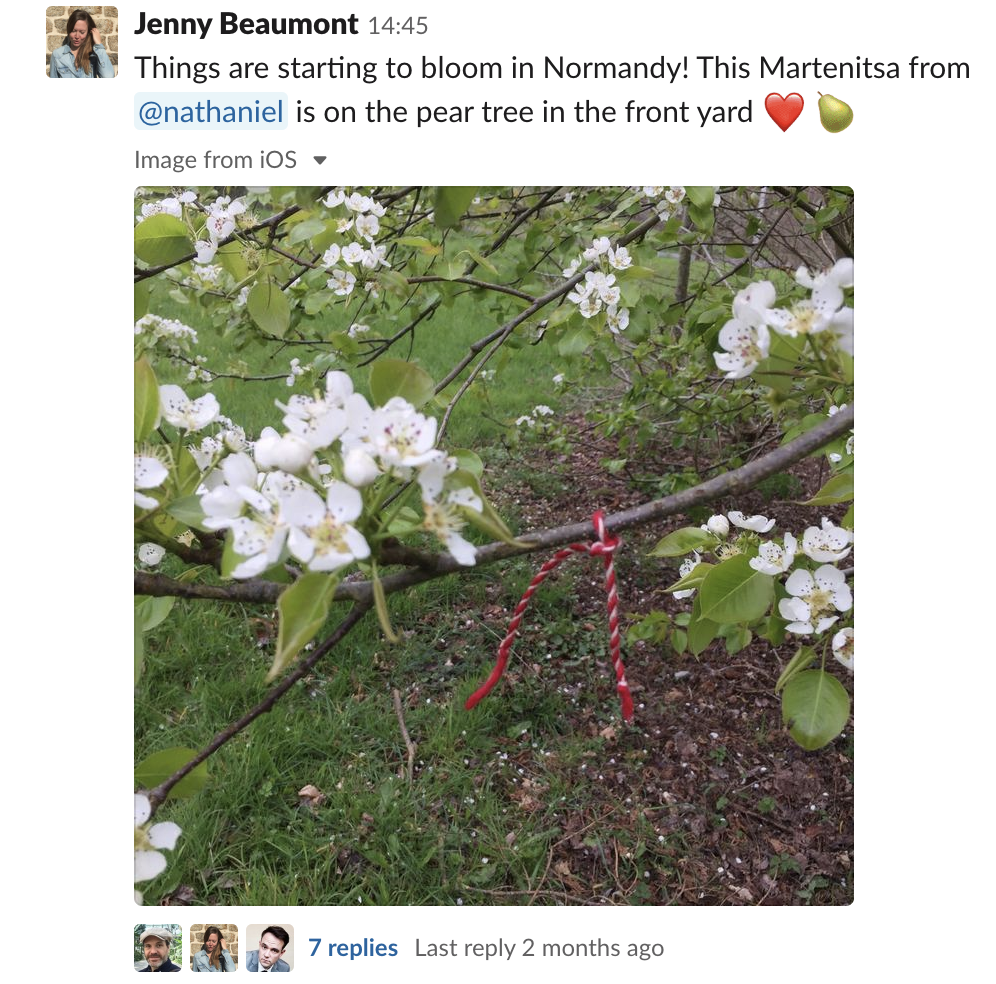In part 1 of this series we talked about the challenges of cross cultural distributed teams and established that the multiple challenges of remote work all come down to issues that create distance in teams. In this post I’ll outline some of the ways we can reduce the distance between remote teams.
Make the World Smaller
The first starts with making the world smaller. When we’re working so far apart, how do we do this?
Take every opportunity to meet in person.
This is a recent photo from our company retreat where we all got together as we do once a year or so. Times like these forge stronger, more robust relationships. If you’re a business employing distributed teams who wants to facilitate a great team and company culture should be a high priority.
You may not be ready to have a company wide meetup in some exotic location, but can you facilitate groups near each other to get together? Encouraging, and facilitating people who are relatively close to attend local meetups, conferences, project kick offs, or other events that provide a shared interest and common goal will kick start relationships that will provide opportunities for new shared understandings about each other. This will make working together in future a smoother, more empathetic experience.
Turn on your Video

In those moments when you can’t meet in person but need to connect, use video calls. This may be a no brainer; you probably already have a premium account with Zoom or Skype… but let me ask you this, in how many of the calls you connect to do you not turn on video?
I am often guilty of doing this… especially if I’m taking a call early and haven’t had coffee… but I’m trying to default to leaving the video on, again, because we’re trying to make the world smaller, actually having video decreases the gap, being able to see someone’s body language, facial expressions, to see their laughter, not just hear it is another path to reducing the virtual distance between us, even if it doesn’t reduce the physical distance.
Use excellent tools
And of course, tools and apps can also help reduce the distance.
We have recently been working with an agency whose team are predominantly Japanese speakers and we had some concerns about how we were going to be able to communicate smoothly with this external partner on our project and only a single Japanese team member. An off the cuff comment from someone prompted us to search for Slack tools to help and we found and installed an app that translates your conversation in real time.
This marvel will reduce some of the challenges we were worrying about in having only one native Japanese speaker on the team. Now he may only have to check translations, rather than feel the pressure to be doing the translating for us. It will also increase the amount of conversation that is possible, another way of reducing the distance between people.

You can see in this image, Shin and I discussing using this conversation as a demonstration for a WordCamp talk! He’s typing in Japanese, I’m of course in English… and yet.. there we are both finding ourselves on the same page.
Make yourself Bigger
A second way to keep reducing the distance between ourselves and our colleagues from other places is to be prepared to grow, and to change.
Doing so is not complicated.
- Have an attitude of willingness to learn
- Don’t assume your way is the only way
- Keep an open mind, stay inquisitive
- Listen actively by paying attention to both verbal and nonverbal cues
- Take time to learn about your colleagues cultural differences, people are interested in sharing where they’re from, their culture and story, don’t feel embarrassed to ask about such things, invite connection and feel your world grow bigger as you do
- Have a genuine curiosity about how difference unfolds in your workplace and be willing to change your work environment so that it is really inclusive.
- Keep it simple, speak and write in language that is easy for all, even if that means altering how you would normally conduct Slack message, or calls – slow down, simplify, pause for people to keep up
The culture of your company or team, derives from the participation of all the people who are in it, not just from initiatives from the top down. Embracing difference, and creating a culture that celebrates the uniqueness off all the people in the team gives us all an opportunity to learn to grow bigger even without having to leave home as I did way back then.
Embrace Difference
Embrace and encourage people’s differences, don’t try to avoid them.
Recognise that cultural events are important to individuals and also to the group and invite team to share their cultural heritage and celebrations with you.
The retreat I mentioned earlier took place in late in February and we were all together on March 1st, a significant day for our 3 Bulgarian team members.
On the first of March in Bulgaria it is customary to share with your friends and family these red and white bracelets made of yarn called Martenitsi.

They are a celebration of the changing of the seasons and are shared in winter. The wearer will wear their Martenitsa until they see the first sign of spring… maybe a blossom on a tree, or a stork returning to its nest. When that spring comes it’s the custom to tie your martenitsa to a blossoming tree to wish it the good health and joy you have had while wearing it…

As a consequence in the spring you can see the martenitsi in the trees where everyone has tied their bracelets in the celebration. I was lucky enough to be in Sofia last week and saw these beautifully decorated trees.
Because we shared this tradition together at the retreat, these martenitsi we exchanged are now in the 4 corners of the world… France, England, United States, Germany and Australia, and probably many other places that didn’t get shared in our Slack channel…
It has been wonderful to share these traditions with our colleagues and I am resolved to encourage other regions and cultures in our company to share their own traditions with us.
So, now that we’ve identified the challenges, and proposed some ways to reducing the distance between people, how do we go about doing it? We can talk about it, and do all the reading we can find about cross cultural working, but at the end of the day, what are the action steps, and whose journey is it to take those first steps towards closing the gaps? We’ll examine the action steps in the concluding part of this series.
What traditions have you learned about from your colleagues? What traditions of your own have you shared?







Leave a Reply